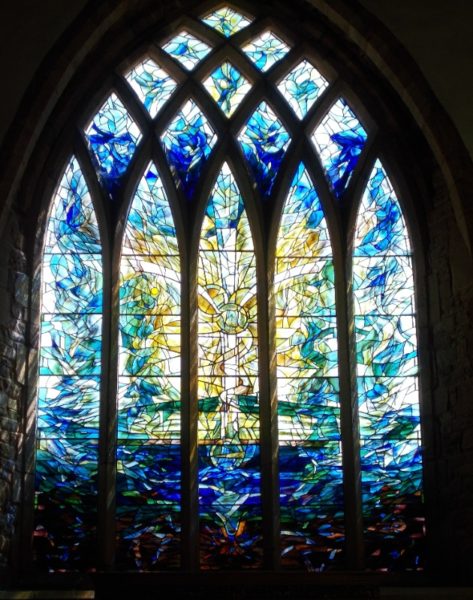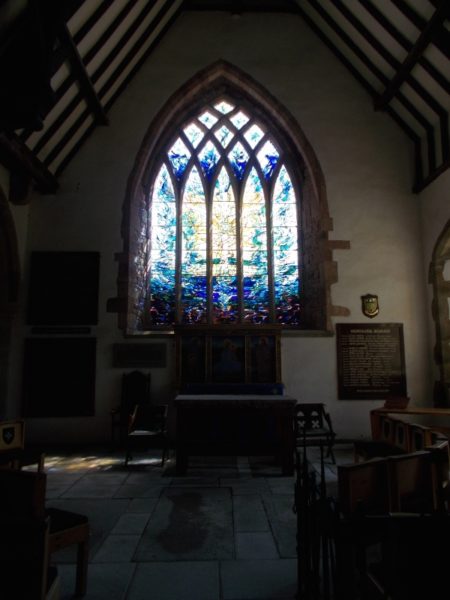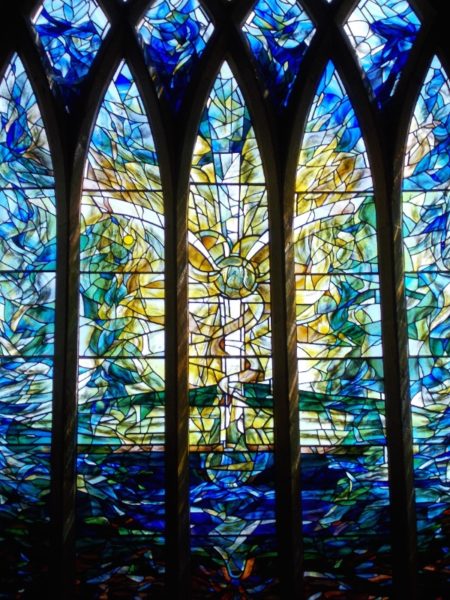My brief blogging interlude on the glories of The Cathedral of the Forest having come to an end, back I swing from embroidery on the large and public scale to that on the small and personal level and yes, here I go with more sleeve monograms! These navy on navy Ms I find particularly satisfying because they combine my love of monograms with my current passion for embroidery on sleeves and strangely I find these especially and perversely satisfying as they’re subtle to the point of invisible – catching a sudden glimpse of one is rather like wearing a faceted ring which can at any time catch the light and remind you of why you love it. Once again photographing navy, let alone navy on navy, is pretty much beyond me and what is a perfectly decent fine quality cotton jersey looks little better than a washed out dish cloth. Hey ho!
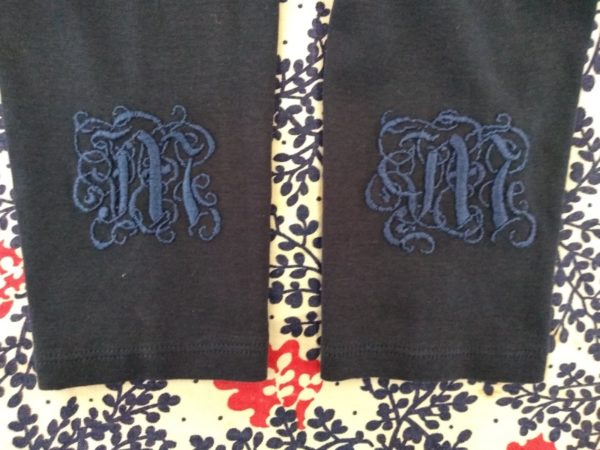
Monogram M in navy on navy T shirt sleeves (hand embroidered by Mary Addison)
Perhaps it’s the Diamond Jubilee (and being born in 1952 it might be that we Coronation babies have that little bit more cause to celebrate), perhaps it’s what we hope is the end of Covid at its most aggressive but whatever it is I’ve recently been feeling now is the time to pull out those ideas lurking at the back of the mind and either act on them or jettison them forever. To this end my husband and I are collaborating on a book about John Rushout, 2nd Baron Northwick (1777-1859). Few have ever heard of him and information is alarmingly sparse but he was one of the great connoisseurs of the C19th and he amassed one of the the largest and best collections of art not only of his day but possibly of any time. This collection was housed in the family home, Northwick Park, Blockley (now in Gloucestershire, then in Worcestershire) and also here in Cheltenham at Thirlestane (also spelt Thirlestaine) House which he enlarged in step with the growth of his collection. That we know so little about such a collection is mainly due to the fact that Lord Northwick, never married, had no children and died intestate in 1859 whereupon everything was sold off with the proceeds divided up between his heirs.
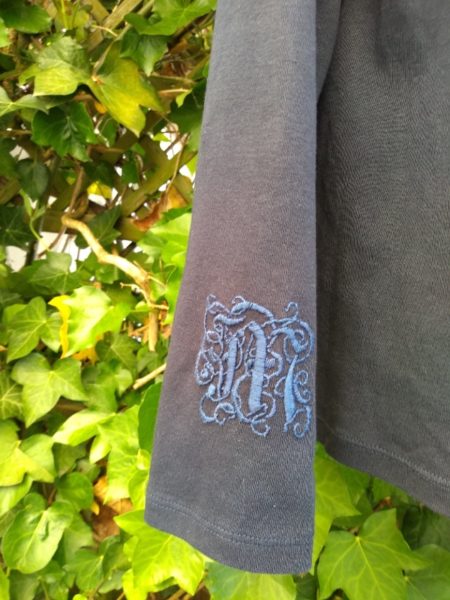
Monogram M in navy on navy T shirt sleeves (hand embroidered by Mary Addison)
Since the 1970s when my husband came to Cheltenham as the director of the Art Gallery and Museum he has spent much time trying to trace paintings from Lord Northwick’s collection – limiting himself to painting in oil or tempera but not including watercolours, or his collections of prints, coins or furniture. Over the years he has had some success and the results of his (ongoing) research are now catalogued and available for scholarly research in the National Gallery in London. But this is the stuff of a finger tip search through a man’s possessions when the man himself is elusive and only glimpsed at – and even that only occasionally – in the writings of others. So, we are on a mission to find that man.
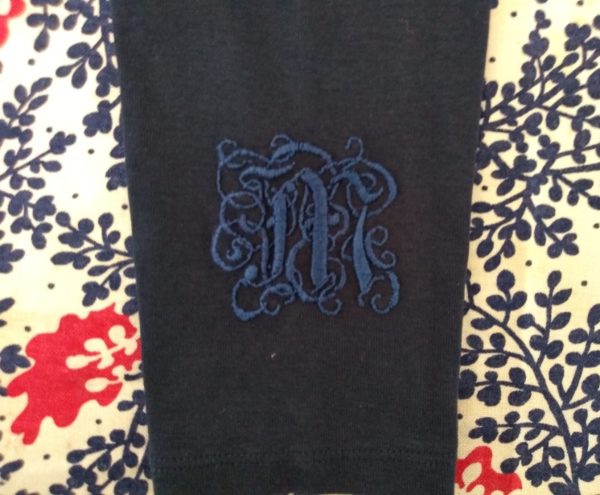
Monogram M in navy on navy T shirt sleeves (hand embroidered by Mary Addison)
The National Gallery in London has 26 paintings which were previously in Lord Northwick’s collection (that we know about) and these include most notably Botticelli’s Portrait of a Young Man (bought in 1804 as a Botticelli, later attributed to Masaccio and since reattributed to Botticelli) and Raphael’s St Catherine of Alexandria. One of the first collectors of Italian art from the early Renaissance, Northwick was also patron to contemporary painters, including those who were making their names painting pictures and frescoes for the 1835 rebuilding of the House of Commons. Earlier in his life, at the end of 10 years on his grand tour Northwick spent much time in the company of that supreme connoisseur Sir William Hamilton, his wife Emma and also Lord Nelson. He was one of the first to hear the news of the victory of the Battle of the Nile (1798) which he heard from Nelson himself and his interpreting skills were called upon in the controversial court marshal of a Neapolitan Republican leader held by Nelson on board a British ship. Yet much about him is a mystery.
This year I was planning to do some slightly bigger embroidery projects but having been ambushed by Northwick, I realise this could consume us for a considerable amount of time. I can’t, however, give up embroidery altogether – relaxing and watching television in the evening without some sort of needle in my hands is impossible, so perhaps it’s time for another alphabet – this time I rather fancy black stitching on white linen.

